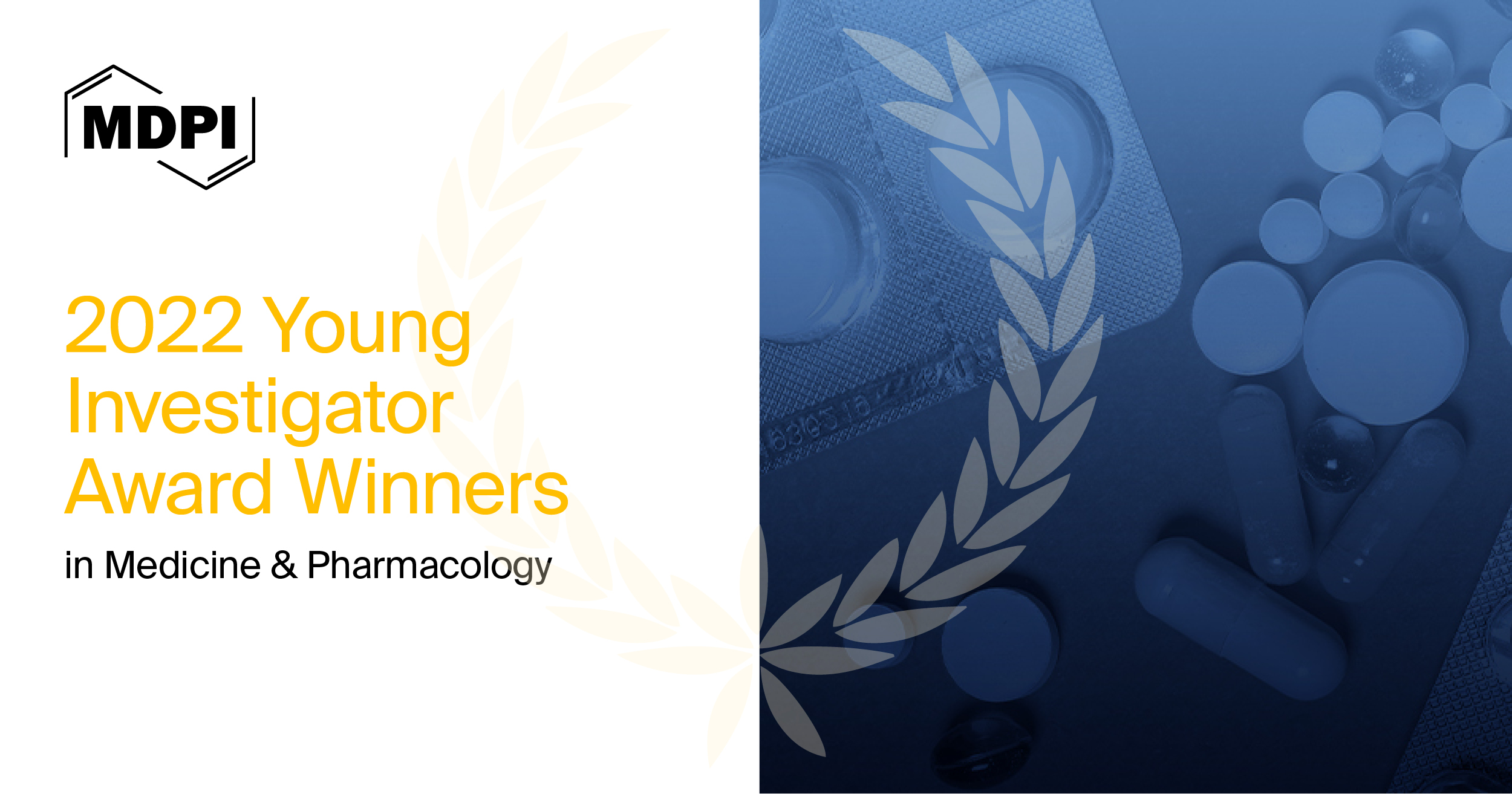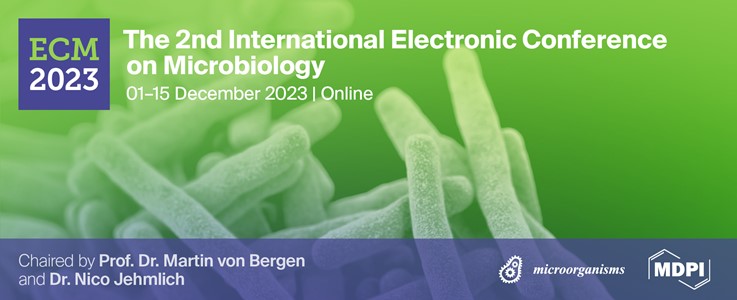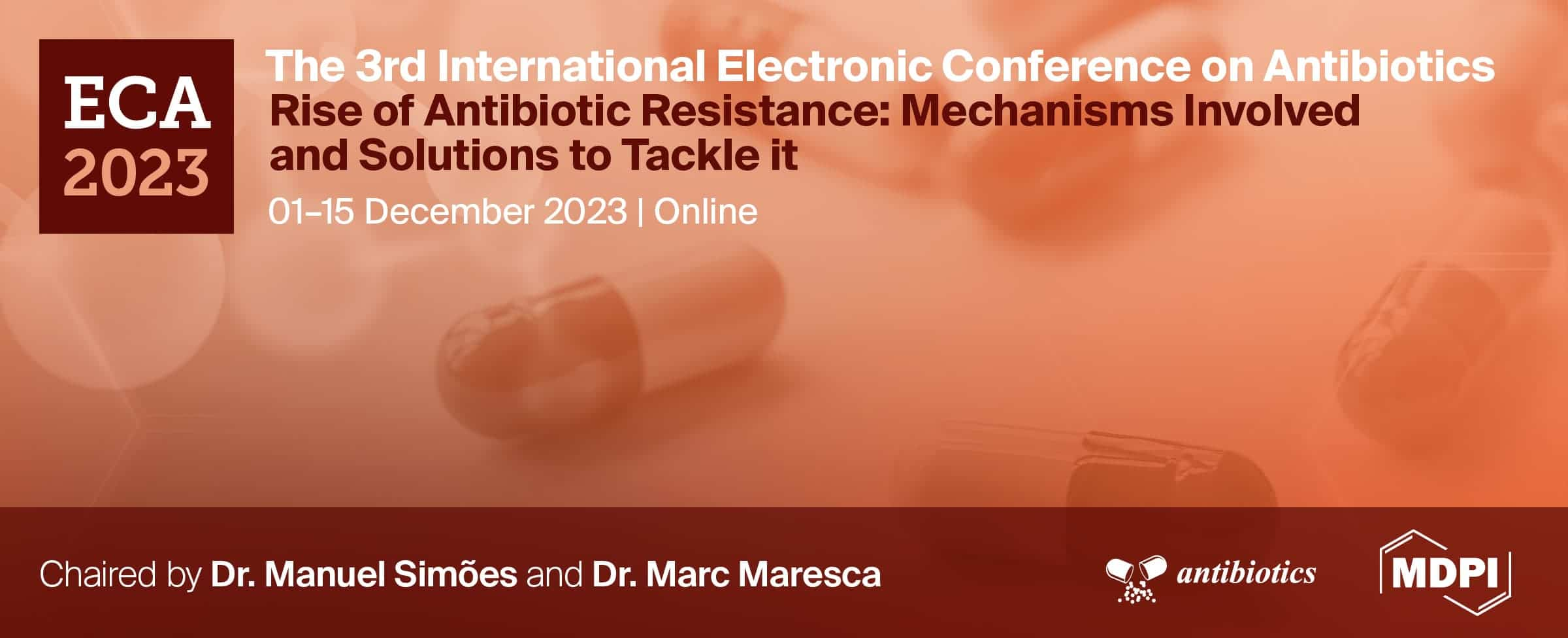-
 Comparison of E. coli Culture and qPCR Methods for Monitoring Antibiotic Resistance in Water Environments
Comparison of E. coli Culture and qPCR Methods for Monitoring Antibiotic Resistance in Water Environments -
 Beyond Penicillin: The Potential of Filamentous Fungi for Drug Discovery in the Age of Antibiotic Resistance
Beyond Penicillin: The Potential of Filamentous Fungi for Drug Discovery in the Age of Antibiotic Resistance -
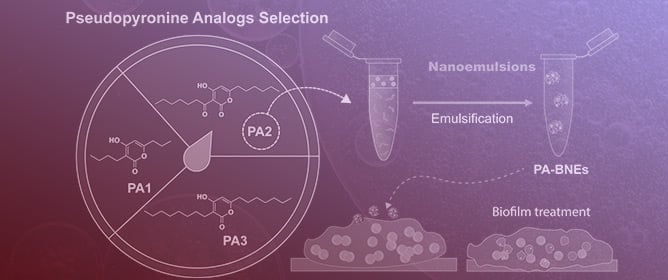 Synergistic Antibiofilm Activity with Biodegradable Nanoemulsions Incorporating Pseudopyronine Analogs
Synergistic Antibiofilm Activity with Biodegradable Nanoemulsions Incorporating Pseudopyronine Analogs -
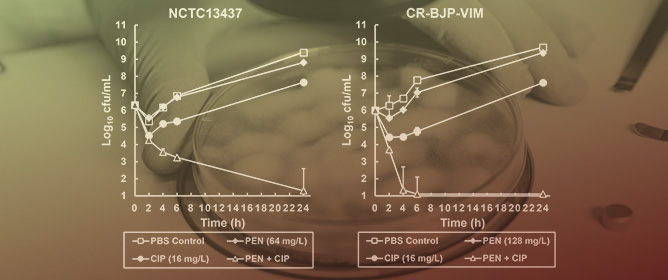 A Combination Therapy of Pentamidine with Ciprofloxacin Is Synergistic versus Pseudomonas aeruginosa In Vitro and In Vivo
A Combination Therapy of Pentamidine with Ciprofloxacin Is Synergistic versus Pseudomonas aeruginosa In Vitro and In Vivo
Journal Description
Antibiotics
Antibiotics
is an international, peer-reviewed, open access journal on all aspects of antibiotics, published monthly online by MDPI.
- Open Access— free for readers, with article processing charges (APC) paid by authors or their institutions.
- High Visibility: indexed within Scopus, SCIE (Web of Science), PubMed, PMC, Embase, CAPlus / SciFinder, and other databases.
- Journal Rank: JCR - Q1 (Pharmacology & Pharmacy) / CiteScore - Q1 (General Pharmacology, Toxicology and Pharmaceutics)
- Rapid Publication: manuscripts are peer-reviewed and a first decision is provided to authors approximately 13.4 days after submission; acceptance to publication is undertaken in 2.6 days (median values for papers published in this journal in the first half of 2023).
- Recognition of Reviewers: reviewers who provide timely, thorough peer-review reports receive vouchers entitling them to a discount on the APC of their next publication in any MDPI journal, in appreciation of the work done.
Impact Factor:
4.8 (2022);
5-Year Impact Factor:
4.9 (2022)
Latest Articles
Computationally Designed AMPs with Antibacterial and Antibiofilm Activity against MDR Acinetobacter baumannii
Antibiotics 2023, 12(9), 1396; https://doi.org/10.3390/antibiotics12091396 (registering DOI) - 01 Sep 2023
Abstract
The discovery of new antimicrobials is necessary to combat multidrug-resistant (MDR) bacteria, especially those that infect wounds and form prodigious biofilms, such as Acinetobacter baumannii. Antimicrobial peptides (AMPs) are a promising class of new therapeutics against drug-resistant bacteria, including gram-negatives. Here, we
[...] Read more.
The discovery of new antimicrobials is necessary to combat multidrug-resistant (MDR) bacteria, especially those that infect wounds and form prodigious biofilms, such as Acinetobacter baumannii. Antimicrobial peptides (AMPs) are a promising class of new therapeutics against drug-resistant bacteria, including gram-negatives. Here, we utilized a computational AMP design strategy combining database filtering technology plus positional analysis to design a series of novel peptides, named HRZN, designed to be active against A. baumannii. All of the HRZN peptides we synthesized exhibited antimicrobial activity against three MDR A. baumannii strains with HRZN-15 being the most active (MIC 4 µg/mL). This peptide also inhibited and eradicated biofilm of A. baumannii strain AB5075 at 8 and 16 µg/mL, which is highly effective. HRZN-15 permeabilized and depolarized the membrane of AB5075 rapidly, as demonstrated by the killing kinetics. HRZN 13 and 14 peptides had little to no hemolysis activity against human red blood cells, whereas HRZN-15, -16, and -17 peptides demonstrated more significant hemolytic activity. HRZN-15 also demonstrated toxicity to waxworms. Further modification of HRZN-15 could result in a new peptide with an improved toxicity profile. Overall, we successfully designed a set of new AMPs that demonstrated activity against MDR A. baumannii using a computational approach.
Full article
(This article belongs to the Special Issue Computational Approaches in Discovery and Design of Antimicrobial Peptides - 2nd Volume)
►
Show Figures
Open AccessArticle
Impact of Continuous Kidney Replacement Therapy and Hemoadsorption with CytoSorb on Antimicrobial Drug Removal in Critically Ill Children with Septic Shock: A Single-Center Prospective Study on a Pediatric Cohort
by
, , , , , , , , , , , , , , , , and
Antibiotics 2023, 12(9), 1395; https://doi.org/10.3390/antibiotics12091395 (registering DOI) - 31 Aug 2023
Abstract
A prospective observational study of children admitted to the pediatric intensive care unit (PICU) with a diagnosis of sepsis/septic shock. All critically ill children received hemoadsorption treatment with CytoSorb (CS) in combination with CKRT. Therapeutic drug monitoring has been performed on 10 critically
[...] Read more.
A prospective observational study of children admitted to the pediatric intensive care unit (PICU) with a diagnosis of sepsis/septic shock. All critically ill children received hemoadsorption treatment with CytoSorb (CS) in combination with CKRT. Therapeutic drug monitoring has been performed on 10 critically ill children, testing four antimicrobial molecules: meropenem, ceftazidime, amikacin and levofloxacin. In order to evaluate the total and isolated CKRT and CS contributions to antibiotic removal, blood samples at each circuit point (post-hemofilter, post-CS and in the effluent line) were performed. Therefore, the clearance and mass Removal (MR) of the hemofilter and CS were calculated. Results. Our preliminary report describes a different impact of CS on these target drugs removal: CS clearance was low for amikacine (6–12%), moderate for ceftazidime (43%) and moderate to high for levofloxacine (52–72%). Higher MR and clearance were observed with CKRT compared to CS. To the best of our knowledge, this is the first report regarding pharmacokinetic dynamics in critically ill children treated with CKRT and CS for septic shock.
Full article
Open AccessArticle
High Prevalence of GES-5 Variant and Co-Expression of VIM-2 and GES-45 among Clinical Pseudomonas aeruginosa Strains in Tunisia
by
, , , , , , , , , , and
Hadda-Imen Ouzari
Antibiotics 2023, 12(9), 1394; https://doi.org/10.3390/antibiotics12091394 (registering DOI) - 31 Aug 2023
Abstract
Carbapenem-resistant Pseudomonas aeruginosa (CRPA) are a global health concern. The antimicrobial resistance, virulence, and molecular typing of 57 CRPA isolated from 43 patients who attended a specific Tunisian hospital from September 2018 to July 2019 were analyzed. All but one were multidrug-resistant CRPA,
[...] Read more.
Carbapenem-resistant Pseudomonas aeruginosa (CRPA) are a global health concern. The antimicrobial resistance, virulence, and molecular typing of 57 CRPA isolated from 43 patients who attended a specific Tunisian hospital from September 2018 to July 2019 were analyzed. All but one were multidrug-resistant CRPA, and 77% were difficult-to-treat-resistant (DTR) isolates. The blaVIM-2 gene was detected in four strains (6.9%), and among the 36 blaGES-positive CRPA (62%), the blaGES-5 gene was the predominant variant (86%). Three strains co-harbored the blaVIM-2 and blaGES-45 genes, and seven CRPA carried the blaSHV-2a gene (14%). OprD alterations, including truncations by insertion sequences, were observed in 18 strains. Regarding the 46 class 1 integron-positive CRPA (81%), the blaGES-5 gene was located in integron In717, while the blaGES-29 and blaGES-45 genes were found in two new integrons (In2122 and In4879), and the blaVIM-2 gene was found in In1183 and the new integron In2142. Twenty-four PFGE patterns and thirteen sequence types (three new ones) were identified. The predominant serotype O:11 and exoU (81%) were mostly associated with ST235 and the new ST3385 clones. The seven blaSHV-2a-CRPA from different patients belonged to ST3385 and the same PFGE pattern. The blaGES-5- and blaVIM-2 + blaGES-45-positive CRPA recovered mostly from ICU patients belonged to the high-risk clone ST235. Our results highlight the alarming prevalence of blaGES-5- and ST235-CRPA, the co-existence of blaGES-45 and blaVIM-2, and their location within integrons favoring their dissemination.
Full article
(This article belongs to the Special Issue Diversity of Antimicrobial Resistance Genes in Clinical Settings)
►▼
Show Figures
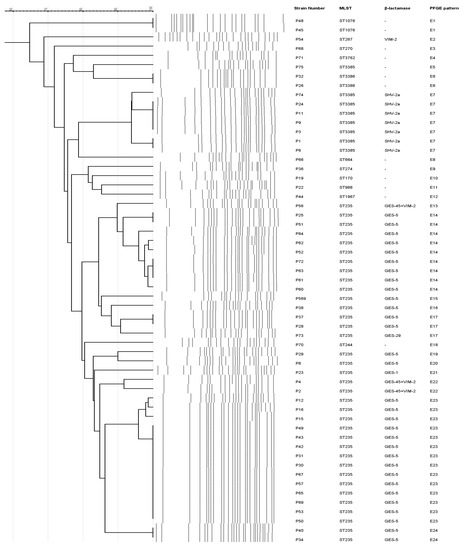
Figure 1
Open AccessArticle
Real-World Data about Commonly Used Antibiotics in Long-Term Care Homes in Australia from 2016 to 2019
Antibiotics 2023, 12(9), 1393; https://doi.org/10.3390/antibiotics12091393 (registering DOI) - 31 Aug 2023
Abstract
In this study, we use real-world data to explore trends in antibiotic use in a dynamic cohort of long-term care (LTC) residents. A cross-sectional retrospective analysis of pharmacy medication supply records of 3459 LTC residents was conducted from 31 May 2016 to 31
[...] Read more.
In this study, we use real-world data to explore trends in antibiotic use in a dynamic cohort of long-term care (LTC) residents. A cross-sectional retrospective analysis of pharmacy medication supply records of 3459 LTC residents was conducted from 31 May 2016 to 31 May 2019. The primary outcome was the monthly prevalence of residents with an antibiotic episode. Secondary outcomes were the type of antibiotic used and duration of use. Over the three-year study period, residents were supplied 10460 antibiotics. On average, 18.9% of residents received an antibiotic monthly. Antibiotic use decreased slightly over time with a mean of 168/1000 (95% CI 146–177) residents using at least one antibiotic per month in June 2016 to 148/1000 (95% CI 127–156) in May 2019. The total number of antibiotic days per 100 resident days remained relatively constant over the study period: 8.8 days in 2016–2017, 8.4 in 2017–2018 and 6.4 in 2018–2019. Prolonged durations exceeding 100 days were seen for a small percentage of residents. We found extensive antibiotic use, which is a recognized contributor to antimicrobial resistance development, underscoring the necessity for quality treatment guidelines in this vulnerable population.
Full article
(This article belongs to the Special Issue The Evolving Role of Antimicrobial Stewardship Interventions in Combating Antibiotic Resistance)
►▼
Show Figures
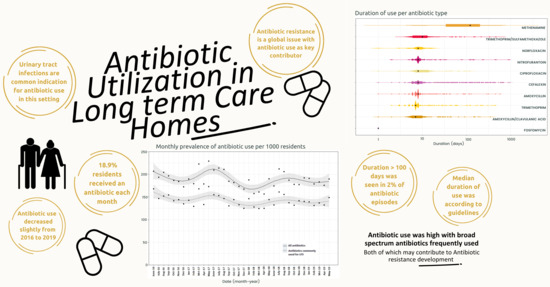
Graphical abstract
Open AccessArticle
The Influence of Patient Sex on Outcomes Following One-Stage and Two-Stage Revision for Periprosthetic Joint Infection in Total Joint Arthroplasty
by
, , , , and
Antibiotics 2023, 12(9), 1392; https://doi.org/10.3390/antibiotics12091392 - 31 Aug 2023
Abstract
Although females have a higher rate of primary total joint arthroplasty (TJA), males have a higher rate of revision. The literature lacks studies examining the relationship between sex and outcomes following single and two-stage exchange for periprosthetic joint infection (PJI). The purpose of
[...] Read more.
Although females have a higher rate of primary total joint arthroplasty (TJA), males have a higher rate of revision. The literature lacks studies examining the relationship between sex and outcomes following single and two-stage exchange for periprosthetic joint infection (PJI). The purpose of this study was to examine if differences exist in outcomes following revision for chronic PJI between sexes. A retrospective review was performed on all patients with an MSIS confirmed PJI who underwent a single or two-stage exchange at our institution from January 2010 to January 2021. Patient demographics, comorbidity characteristics, and outcomes were collected and compared between males and females. The primary outcome variable was disease-free survival at 1 year following definitive revision. Multivariable logistic regression analysis was performed to determine risk factors for failure. Of the 470 patients meeting final eligibility criteria, 250 were male and 226 were female (2 males and 4 females had a joint infection of either the contralateral side or a different joint and were treated as separate records). Of the patients in the cohort, 80% of the males (200/250) and 80% of the females (181/226) were found to be disease-free at 1-year follow-up (p > 0.99). Multivariable logistic regression analysis showed that nicotine use and diabetes, but not sex, were significant predictors of failure. Our study did not find a relationship between sex and outcome of revision for PJI. Further research is required to determine whether differences exist between males and females in the expression of PJI and outcomes following treatment.
Full article
(This article belongs to the Special Issue Diagnosis and Treatment of Periprosthetic Joint Infection)
►▼
Show Figures
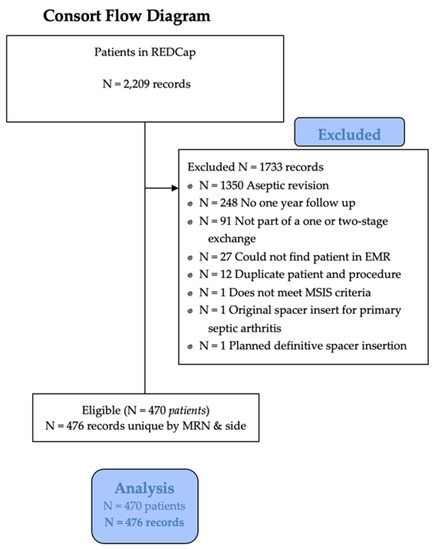
Figure 1
Open AccessArticle
Pharmacokinetic, Pharmacokinetic/Pharmacodynamic, and Safety Investigations of Lefamulin in Healthy Chinese Subjects
by
, , , , , , , , and
Antibiotics 2023, 12(9), 1391; https://doi.org/10.3390/antibiotics12091391 - 31 Aug 2023
Abstract
►▼
Show Figures
This study aimed to explore the pharmacokinetics (PK) and safety of oral (PO) and intravenous (IV) lefamulin in healthy Chinese subjects and to evaluate the efficacy of the intravenous administration regimen using pharmacokinetic/pharmacodynamic (PK/PD) analysis. This study was a randomized, open-label, single- and
[...] Read more.
This study aimed to explore the pharmacokinetics (PK) and safety of oral (PO) and intravenous (IV) lefamulin in healthy Chinese subjects and to evaluate the efficacy of the intravenous administration regimen using pharmacokinetic/pharmacodynamic (PK/PD) analysis. This study was a randomized, open-label, single- and multiple-dose, intravenous and oral administration study. PK parameters were calculated, and the probability of target attainment (PTA) and the cumulative fraction of response (CFR) after IV administration of lefamulin 150 mg 1 h q12 h were analyzed with Monte Carlo simulations. Lefamulin exhibited extensive distribution. The mean steady-state AUC0–24 h of 150 mg lefamulin IV and 600 mg lefamulin PO were 10.03 and 13.96 μg·h/mL, respectively. For Streptococcus pneumoniae and Staphylococcus aureus, based on the free-drug AUC over MIC ratio (fAUC/MIC) target of 1-log10 cfu reduction, the PK/PD breakpoints were 0.25 and 0.125 mg/L, respectively. The CFR was over 90% for both types of strains with 95% protein binding rate, suggesting that the regimen was microbiologically effective. Lefamulin was safe and well-tolerated. The PK of lefamulin in healthy Chinese subjects were consistent with that in foreign countries. Lefamulin demonstrated the microbiological effectiveness against Streptococcus pneumoniae and Staphylococcus aureus.
Full article
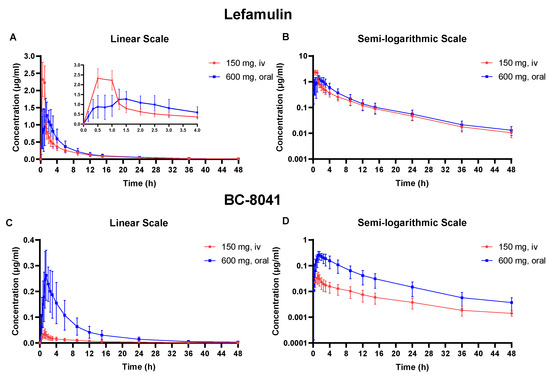
Figure 1
Open AccessEditorial
Editorial for the Special Issue “Antibiotic Prescribing and Antimicrobial Resistance Patterns in Pediatric Patients”
Antibiotics 2023, 12(9), 1390; https://doi.org/10.3390/antibiotics12091390 - 31 Aug 2023
Abstract
Antibiotic overuse is among the most important factors contributing to the growing problem of antimicrobial resistance (AMR) [...]
Full article
(This article belongs to the Special Issue Antibiotic Prescribing and Antimicrobial Resistance Patterns in Pediatric Patients)
Open AccessSystematic Review
The Efficacy and Safety of Bedaquiline in the Treatment of Pulmonary Tuberculosis Patients: A Systematic Review and Meta-Analysis
by
, , , , , , , and
Antibiotics 2023, 12(9), 1389; https://doi.org/10.3390/antibiotics12091389 - 31 Aug 2023
Abstract
Background: Bedaquiline (BDQ) has been designated as a Group A drug by the World Health Organization (WHO) for the management of multi-drug-resistant tuberculosis (MDR-TB) and extensively drug-resistant tuberculosis (XDR-TB). This systematic review and meta-analysis aim to evaluate the efficacy and safety of BDQ-containing
[...] Read more.
Background: Bedaquiline (BDQ) has been designated as a Group A drug by the World Health Organization (WHO) for the management of multi-drug-resistant tuberculosis (MDR-TB) and extensively drug-resistant tuberculosis (XDR-TB). This systematic review and meta-analysis aim to evaluate the efficacy and safety of BDQ-containing regimens for the treatment of patients with pulmonary TB. Methods: PubMed (MEDLINE), Elton B. Stephens Company (EBSCO) database, the Cochrane Register of Controlled Trials, and the China National Knowledge Infrastructure (CNKI) database were initially searched on 15 June 2022 and again on 20 March 2023. We included randomized controlled trials (RCTs) and non-randomized studies (NRSs) that administered BDQ to TB patients. The outcomes of interest were as follows: (1) efficacy, including the rate of sputum culture conversion at 8 weeks, 24 weeks, and during follow-up, as well as the rates of completion cure, death, treatment failure, and loss at follow-up and at the end of the treatment; and (2) safety, which encompassed the incidences of cardiotoxicity, hepatotoxicity, and grade 3–5 adverse events during the treatment period. Results: A total of 29 articles were included in this meta-analysis, representing 23,358 individuals. Patients who were treated with BDQ were compared with patients who were not exposed to BDQ. The use of BDQ-containing regimens demonstrated improved rates of sputum conversion in RCTs at 24 weeks (RR = 1.27, 95% CI: 1.10 to 1.46) and during follow-up (RR = 1.33, 95% CI: 1.06 to 1.66). Additionally, BDQ-containing regimens showed increased cure rates (RR = 1.60, 95% CI: 1.13 to 2.26) and decreased failure rates (RR = 0.56, 95% CI: 0.56 to 0.88). In NRSs, BDQ-containing regimens improved the sputum culture conversion rate during follow-up (RR = 1.53, 95% CI: 1.07 to 2.20), increased the rate of cure (RR = 1.86, 95% CI: 1.23 to 2.83), reduced deaths from all causes (RR = 0.68, 95% CI: 0.48 to 0.97), and reduced failure rates (RR = 0.57, 95% CI: 0.46 to 0.71). However, the use of BDQ-containing regimens was associated with increased incidences of cardiotoxicity (RR = 4.54, 95% CI: 1.74 to 11.87) and grade 3–5 adverse events (RR = 1.42, 95% CI: 1.17 to 1.73) in RCTs. NRSs also showed an association between BDQ-containing regimens and cardiotoxicity (RR = 6.00, 95% CI: 1.32 to 27.19). No significant differences were observed between intervention groups and control groups with respect to other outcomes. Conclusions: Data from both RCTs and NRSs support the efficacy of BDQ for the treatment of pulmonary tuberculosis. However, the use of BDQ is associated with a higher incidence of cardiotoxicity and serious adverse events. Comparative data on efficacy and safety are limited, and further confirmation is required, due to potential bias and discrepancies in the available studies.
Full article
(This article belongs to the Special Issue Discovery and Development of Novel Therapeutic Agents in Infectious Diseases Treatment)
►▼
Show Figures
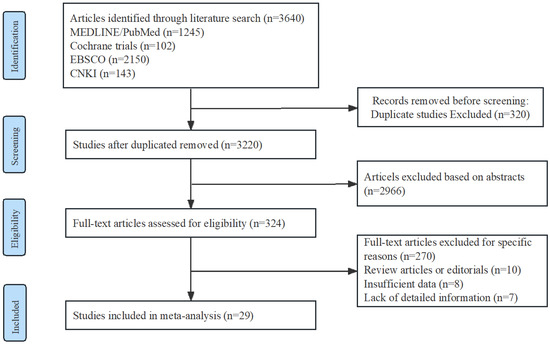
Figure 1
Open AccessArticle
Pharmacokinetic/Pharmacodynamic Target Attainment of Continuous Infusion Piperacillin–Tazobactam or Meropenem and Microbiological Outcome among Urologic Patients with Documented Gram-Negative Infections
by
, , , , and
Antibiotics 2023, 12(9), 1388; https://doi.org/10.3390/antibiotics12091388 - 31 Aug 2023
Abstract
►▼
Show Figures
(1) Objectives: To describe the relationship between pharmacokinetic/pharmacodynamic (PK/PD) target attainment of continuous infusion (CI) piperacillin–tazobactam or meropenem monotherapy and microbiological outcome in a case series of urological patients with documented Gram-negative infections. (2) Methods: Patients admitted to the urology ward who were
[...] Read more.
(1) Objectives: To describe the relationship between pharmacokinetic/pharmacodynamic (PK/PD) target attainment of continuous infusion (CI) piperacillin–tazobactam or meropenem monotherapy and microbiological outcome in a case series of urological patients with documented Gram-negative infections. (2) Methods: Patients admitted to the urology ward who were treated with CI piperacillin–tazobactam or meropenem monotherapy for documented Gram-negative infections and underwent real-time therapeutic drug monitoring (TDM)-guided expert clinical pharmacological advice (ECPA) program from June 2021 to May 2023 were retrospectively retrieved. Average steady-state (Css) piperacillin–tazobactam and meropenem concentrations were determined, and the free fractions (fCss) were calculated. Optimal PK/PD target attainments were defined as an fCss/MIC ratio >4 for CI meropenem and an fCss/MIC ratio of piperacillin >4 coupled with an fCss/CT ratio for tazobactam >1 for piperacillin–tazobactam (joint PK/PD target). The relationship between beta-lactam PK/PD targets and microbiological outcome was explored. (3) Results: Sixteen urologic patients with documented Gram-negative infections (62.5% complicated urinary tract infections (cUTI)) had 30 TDM-guided ECPAs. At first TDM assessment, beta-lactam dosing adjustments were recommended in 11 out of 16 cases (68.75%, of which 62.5% decreases and 6.25% increases). Overall, beta-lactam dosing adjustments were recommended in 14 out of 30 ECPAs (46.6%). Beta-lactam PK/PD target attainments were optimal in 100.0% of cases. Microbiological failure occurred in two patients, both developing beta-lactam resistance. (4) Conclusion: A TDM-guided ECPA program may allow for optimizing beta-lactam treatment in urologic patients with documented Gram-negative infections, ensuring microbiological eradication in most cases.
Full article
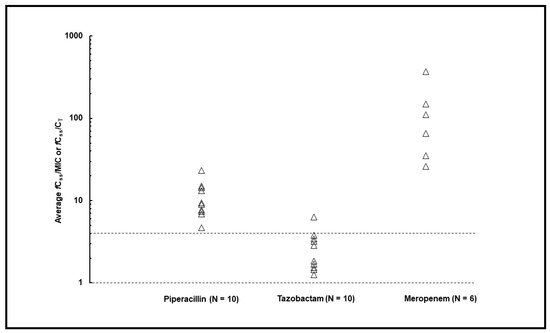
Figure 1
Open AccessArticle
Evaluation of Bile Salts on the Survival and Modulation of Virulence of Aliarcobacter butzleri
by
, , , , and
Antibiotics 2023, 12(9), 1387; https://doi.org/10.3390/antibiotics12091387 - 30 Aug 2023
Abstract
Aliarcobacter butzleri is a Gram-negative bacterium associated with infections of the gastrointestinal tract and widely distributed in various environments. For successful infection, A. butzleri should be able to tolerate various stresses during gastrointestinal passage, such as bile. Bile represents an antimicrobial host barrier
[...] Read more.
Aliarcobacter butzleri is a Gram-negative bacterium associated with infections of the gastrointestinal tract and widely distributed in various environments. For successful infection, A. butzleri should be able to tolerate various stresses during gastrointestinal passage, such as bile. Bile represents an antimicrobial host barrier that acts against external noxious agents and consists of a variety of bile salts. The intestinal bile salts act as detergents involved in the antimicrobial host defense; although, on the bacterial side, they could also serve as a signal to activate virulence mechanisms. The aim of this work was to understand the effects of bile salts on the survival and virulence of A. butzleri. In our study, A. butzleri was able to survive in the presence of human physiological concentrations of bile salts. Regarding the virulence features, an increase in cellular hydrophobicity, a decrease in motility and expression of flaA gene, as well as an increase in biofilm formation with a concomitant change in the type of biofilm structure were observed in the presence of sub-inhibitory concentration of bile salts. Concerning adhesion and invasion ability, no significant difference was observed. Overall, the results demonstrated that A. butzleri is able to survive in physiological concentrations of bile salts and that exposure to bile salts could change its virulence mechanisms.
Full article
(This article belongs to the Special Issue Arcobacteraceae and Campylobacteraceae: Prevalence, Virulence and Antibiotics Resistance)
►▼
Show Figures
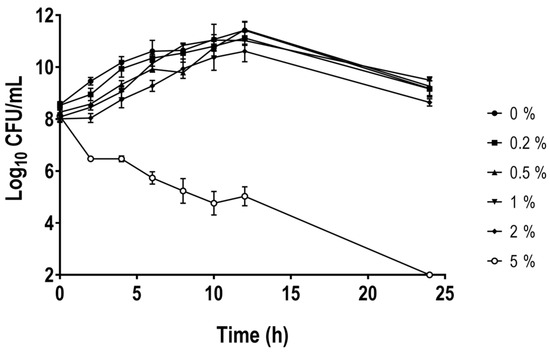
Figure 1
Open AccessArticle
Characterization of Carbapenemase- and ESBL-Producing Gram-Negative Bacilli Isolated from Patients with Urinary Tract and Bloodstream Infections
Antibiotics 2023, 12(9), 1386; https://doi.org/10.3390/antibiotics12091386 - 30 Aug 2023
Abstract
►▼
Show Figures
A total of 199 Gram-negative bacterial isolates from urinary tract infections and 162 from bloodstream infections were collected from 12 healthcare systems throughout the United States between May 2021 and August 2022. The isolates, phenotypically non-susceptible to 2nd or 3rd generation cephalosporins or
[...] Read more.
A total of 199 Gram-negative bacterial isolates from urinary tract infections and 162 from bloodstream infections were collected from 12 healthcare systems throughout the United States between May 2021 and August 2022. The isolates, phenotypically non-susceptible to 2nd or 3rd generation cephalosporins or carbapenems, were characterized through antimicrobial susceptibility testing and whole genome sequence analysis to obtain a broad snapshot of beta-lactamase-mediated resistance among these two sample types. Overall, 23 different carbapenemase genes were detected among 13 species (20.5% of isolates). The blaKPC-3 and blaKPC-2 subtypes were the most common carbapenemase genes identified, followed by blaNDM and the co-carriage of two different blaOXA carbapenemases by Acinetobacter baumannii isolates. All carbapenemase-producing A. baumannii isolates were mCIM negative. Extended-spectrum beta-lactamase genes were identified in 66.2% of isolates; blaCTX-M-15 was the most common. AmpC genes, both plasmid and chromosomal, were detected in 33.2% of isolates. Importantly, 2.8%, 8.3%, and 22.2% of blaKPC-positive organisms were susceptible to ertapenem, imipenem, and meropenem, respectively. The correlation between broth microdilution and disk diffusion results was high for most drugs except cefepime, where the detection of resistance was statistically lower by disk diffusion. Thus, there were gaps in the accuracy of susceptibility testing for some mechanisms of resistance.
Full article
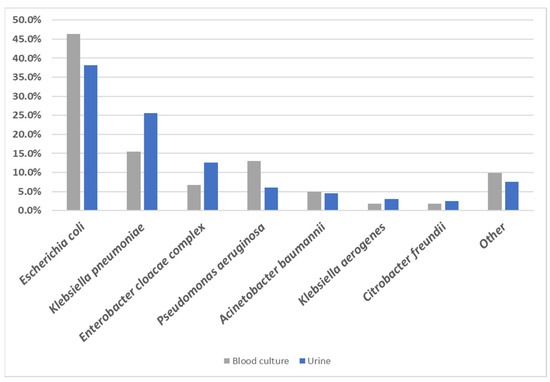
Figure 1
Open AccessCommunication
SK-03-92 Drug Kills Intracellular Mycobacterium tuberculosis
Antibiotics 2023, 12(9), 1385; https://doi.org/10.3390/antibiotics12091385 - 30 Aug 2023
Abstract
Background: Tuberculosis affects millions of people worldwide. The emergence of drug-resistant Mycobacterium tuberculosis strains has made treatment more difficult. A drug discovery project initiated to screen natural products identified a lead stilbene compound, and structure function analysis of hundreds of analogs led to the
[...] Read more.
Background: Tuberculosis affects millions of people worldwide. The emergence of drug-resistant Mycobacterium tuberculosis strains has made treatment more difficult. A drug discovery project initiated to screen natural products identified a lead stilbene compound, and structure function analysis of hundreds of analogs led to the discovery of the SK-03-92 stilbene lead compound with activity against several non-tuberculoid mycobacteria. Methods: For this study, an MIC analysis and intracellular killing assay were performed to test SK-03-92 against M. tuberculosis grown in vitro as well as within murine macrophage cells. Results: The MIC analysis showed that SK-03-92 had activity against M. tuberculosis in the range of 0.39 to 6.25 μg/mL, including activity against single-drug-resistant strains. Further, an intracellular kill assay demonstrated that the SK-03-92 lead compound killed M. tuberculosis cells within murine macrophage cells. Conclusion: Together, the data show the SK-03-92 lead compound can kill M. tuberculosis bacteria within mammalian macrophages.
Full article
(This article belongs to the Special Issue Novel Antimicrobial Agents: Design, Synthesis and Biological Evaluation)
►▼
Show Figures

Figure 1
Open AccessArticle
Articulating Hip Spacers with a Constrained Acetabular Liner: Effect of Acetabular Bone Loss and Cementation Quality
by
, , , , , and
Antibiotics 2023, 12(9), 1384; https://doi.org/10.3390/antibiotics12091384 - 30 Aug 2023
Abstract
Articulating hip spacers for periprosthetic joint infection (PJI) offer numerous advantages over static spacers such as improved patient mobilization, hip functionality, and soft tissue tension. Our study aimed to determine complication rates of a functional articulating spacer using a constrained liner to determine
[...] Read more.
Articulating hip spacers for periprosthetic joint infection (PJI) offer numerous advantages over static spacers such as improved patient mobilization, hip functionality, and soft tissue tension. Our study aimed to determine complication rates of a functional articulating spacer using a constrained liner to determine the role of acetabular cementation mantle and bone loss on the need for second-stage surgery. A retrospective review of 103 patients was performed and demographic information, spacer components and longevity, spacer-related complications, reinfection rates, and grade of bone loss and acetabular cement mantle quality were determined. There was no significant difference in spacer-related complications or reinfection rate between PJI and native hip infections. 33 of 103 patients (32.0%) elected to retain their spacers. Between patients who retained their initial spacer and those who underwent reimplantation surgery, there was not a significant difference in cement mantle grade (p = 0.52) or degree of bone loss (p = 0.78). Functional articulating antibiotic spacers with cemented constrained acetabular liners demonstrate promising early results in the treatment of periprosthetic and native hip infections. The rate of dislocation events was low. Further efforts to improve cement fixation may help decrease the need for second-stage reimplantation surgery.
Full article
(This article belongs to the Special Issue Diagnosis and Treatment of Periprosthetic Joint Infection)
►▼
Show Figures
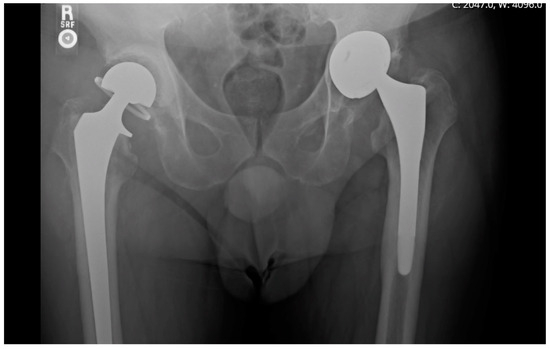
Figure 1
Open AccessArticle
Responding to Urinary Tract Infection Symptoms in England’s Community Pharmacies
by
, , , , , and
Antibiotics 2023, 12(9), 1383; https://doi.org/10.3390/antibiotics12091383 - 30 Aug 2023
Abstract
Most urinary tract infections (UTIs) are self-limiting and frequently present in primary care; it is common for patients to seek symptom relief. The TARGET Treating Your Infection (TYI) leaflet was used to respond to UTI symptoms for women under 65 years presenting in
[...] Read more.
Most urinary tract infections (UTIs) are self-limiting and frequently present in primary care; it is common for patients to seek symptom relief. The TARGET Treating Your Infection (TYI) leaflet was used to respond to UTI symptoms for women under 65 years presenting in community pharmacies. The widespread use of these leaflets was incentivised as part of NHS England’s Pharmacy Quality Scheme (PQS) 2022–23, between October 2022 and March 2023. The TARGET TYI leaflets are aimed to support appropriate antibiotic use and antimicrobial stewardship (AMS) as well as reducing the opportunity for resistance to develop. A total of 8363 community pharmacies completed the AMS criteria within the PQS and collectively submitted data for 104,142 patients presenting with UTI symptoms. The majority, 77% (75,071), of (non-pregnant) women presented with none or only one of the three strongly predictive symptoms of dysuria, new nocturia, cloudy urine, and/or vaginal discharge and, therefore, were less likely to have a UTI, as outlined in the English UTI diagnostic guidance. Conversely, 23% (22,381) of women presented with two or more symptoms of dysuria, new nocturia, cloudy urine, and with no vaginal discharge and, therefore, they were more likely to have a UTI. The TARGET TYI UTI leaflets support community pharmacy teams to differentiate between symptoms more likely to be associated with UTIs and those that could be managed with self-care. The findings suggest that most women presenting to community pharmacies with urinary symptoms were likely to have self-limiting symptoms, and could be suitably managed with self-care, pain relief, and appropriate safety netting. Approximately one-third of patients were managed by community pharmacy team members without the need for referral to a pharmacist and one in five patients presented with escalation symptoms and were signposted to other healthcare settings. A total of 94% (97,452) of women received self-care advice of which 36% (37,565) were also provided with additional patient information leaflets.
Full article
(This article belongs to the Special Issue Antimicrobial Use and Stewardship in Primary Care)
►▼
Show Figures
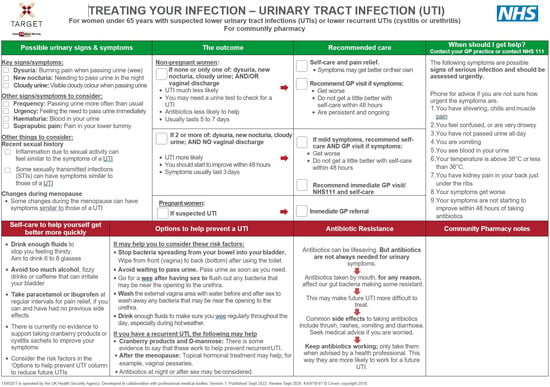
Figure 1
Open AccessReview
Phosphoethanolamine Transferases as Drug Discovery Targets for Therapeutic Treatment of Multi-Drug Resistant Pathogenic Gram-Negative Bacteria
Antibiotics 2023, 12(9), 1382; https://doi.org/10.3390/antibiotics12091382 - 29 Aug 2023
Abstract
Antibiotic resistance caused by multidrug-resistant (MDR) bacteria is a major challenge to global public health. Polymyxins are increasingly being used as last-in-line antibiotics to treat MDR Gram-negative bacterial infections, but resistance development renders them ineffective for empirical therapy. The main mechanism that bacteria
[...] Read more.
Antibiotic resistance caused by multidrug-resistant (MDR) bacteria is a major challenge to global public health. Polymyxins are increasingly being used as last-in-line antibiotics to treat MDR Gram-negative bacterial infections, but resistance development renders them ineffective for empirical therapy. The main mechanism that bacteria use to defend against polymyxins is to modify the lipid A headgroups of the outer membrane by adding phosphoethanolamine (PEA) moieties. In addition to lipid A modifying PEA transferases, Gram-negative bacteria possess PEA transferases that decorate proteins and glycans. This review provides a comprehensive overview of the function, structure, and mechanism of action of PEA transferases identified in pathogenic Gram-negative bacteria. It also summarizes the current drug development progress targeting this enzyme family, which could reverse antibiotic resistance to polymyxins to restore their utility in empiric therapy.
Full article
(This article belongs to the Special Issue Alternatives to Antibiotics: Bacteriocins and Antimicrobial Peptides, 2nd Edition)
►▼
Show Figures

Figure 1
Open AccessBrief Report
Comparison of Cefazolin/Metronidazole to Ampicillin/Sulbactam as Preoperative Antibiotics in Colorectal Surgery: A Retrospective, Single-Center Cohort Study
by
, , , , , , and
Antibiotics 2023, 12(9), 1381; https://doi.org/10.3390/antibiotics12091381 - 29 Aug 2023
Abstract
Aim: The use of prophylactic antibiotics prior to colorectal surgery reduces surgical site infections. Cefazolin and metronidazole are used as a standard regimen. Ampicillin/sulbactam may be an alternative, but current data are limited. We compared the efficacy of ampicillin/sulbactam with cefazolin and metronidazole
[...] Read more.
Aim: The use of prophylactic antibiotics prior to colorectal surgery reduces surgical site infections. Cefazolin and metronidazole are used as a standard regimen. Ampicillin/sulbactam may be an alternative, but current data are limited. We compared the efficacy of ampicillin/sulbactam with cefazolin and metronidazole as prophylactic antibiotics. Methods: Patients who underwent colorectal surgery at Inha University Hospital between 2010 and 2020 were treated prophylactically with cefazolin and metronidazole or ampicillin/sulbactam, and observed for 30 days following surgery. The primary outcome was surgical site infections. The secondary outcomes were deep/organ infections and the need for drainage. Results: SSIs occurred in 2.6% (17/646) of the ampicillin/sulbactam group, whose rate was not inferior to the occurrence in the group receiving cefazolin and metronidazole (3.8%, 21/556). There was no significant difference between the two groups in the secondary outcomes. Conclusions: Compared to the cefazolin and metronidazole combination, ampicillin/sulbactam is not inferior as a preoperative prophylactic antibiotic regimen for colorectal surgery.
Full article
(This article belongs to the Section Antibiotic Therapy in Infectious Diseases)
►▼
Show Figures
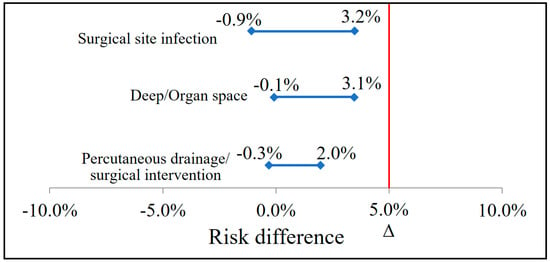
Figure 1
Open AccessReview
Scorpion Venom as a Source of Antimicrobial Peptides: Overview of Biomolecule Separation, Analysis and Characterization Methods
by
, , , , , , and
Antibiotics 2023, 12(9), 1380; https://doi.org/10.3390/antibiotics12091380 - 29 Aug 2023
Abstract
Scorpion venoms have long captivated scientific researchers, primarily due to the potency and specificity of the mechanism of action of their derived components. Among other molecules, these venoms contain highly active compounds, including antimicrobial peptides (AMPs) and ion channel-specific components that selectively target
[...] Read more.
Scorpion venoms have long captivated scientific researchers, primarily due to the potency and specificity of the mechanism of action of their derived components. Among other molecules, these venoms contain highly active compounds, including antimicrobial peptides (AMPs) and ion channel-specific components that selectively target biological receptors with remarkable affinity. Some of these receptors have emerged as prime therapeutic targets for addressing various human pathologies, including cancer and infectious diseases, and have served as models for designing novel drugs. Consequently, extensive biochemical and proteomic investigations have focused on characterizing scorpion venoms. This review provides a comprehensive overview of the key methodologies used in the extraction, purification, analysis, and characterization of AMPs and other bioactive molecules present in scorpion venoms. Noteworthy techniques such as gel electrophoresis, reverse-phase high-performance liquid chromatography, size exclusion chromatography, and “omics” approaches are explored, along with various combinations of methods that enable bioassay-guided venom fractionation. Furthermore, this review presents four adapted proteomic workflows that lead to the comprehensive dissection of the scorpion venom proteome, with an emphasis on AMPs. These workflows differ based on whether the venom is pre-fractionated using separation techniques or is proteolytically digested directly before further proteomic analyses. Since the composition and functionality of scorpion venoms are species-specific, the selection and sequence of the techniques for venom analyses, including these workflows, should be tailored to the specific parameters of the study.
Full article
(This article belongs to the Special Issue Potential of Antimicrobial Peptides for an Exciting Future)
►▼
Show Figures
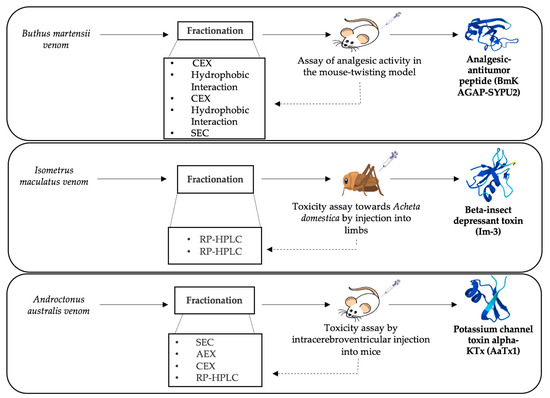
Figure 1
Open AccessArticle
Antibiotic and Heavy Metal Co-Resistant Strain Isolated from Enrichment Culture of Marine Sediments, with Potential for Environmental Bioremediation Applications
by
, , , , , , and
Antibiotics 2023, 12(9), 1379; https://doi.org/10.3390/antibiotics12091379 - 29 Aug 2023
Abstract
►▼
Show Figures
Antibiotics and heavy metals have caused serious contamination of the environment and even resulted in public health concerns. It has therefore become even more urgent to adopt a sustainable approach to combating these polluted environments. In this paper, we investigated the microbial community
[...] Read more.
Antibiotics and heavy metals have caused serious contamination of the environment and even resulted in public health concerns. It has therefore become even more urgent to adopt a sustainable approach to combating these polluted environments. In this paper, we investigated the microbial community of marine sediment samples after 255 days of enrichment culture under Cu (II) and lincomycin stress and ZC255 was the most resistant strain obtained. The 16S rRNA gene sequence confirmed that it belonged to the genus Rossellomorea. Strain ZC255 was resistant to 12 kinds of antibiotics, and had a superior tolerance to Cu (II), Pb (II), Ni (II), Zn (II), Cr (III), and Cd (II). Moreover, it exhibits strong bioremoval ability of Cu and lincomycin. The removal efficiency of Cu (II) and lincomycin can achieve 651 mg/g biomass and 32.5 mg/g biomass, respectively. Strain ZC255 was a promising isolate for pollution bioremediation applications.
Full article
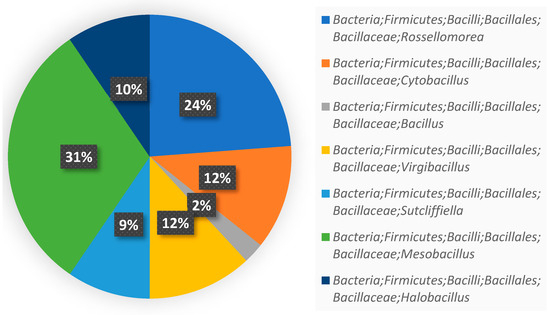
Figure 1
Open AccessArticle
Retrospective Study on Staphylococcus aureus Resistance Profile and Antibiotic Use in a Pediatric Population
by
, , , , , , , , , , , , , and
Antibiotics 2023, 12(9), 1378; https://doi.org/10.3390/antibiotics12091378 - 28 Aug 2023
Abstract
The growing phenomenon of antibiotic resistance and the presence of limited data concerning the pediatric area prompted us to focus on Staphylococcus aureus infection in this study, its antibiotic resistance profile, and the therapeutic management of affected children. We conducted a retrospective study
[...] Read more.
The growing phenomenon of antibiotic resistance and the presence of limited data concerning the pediatric area prompted us to focus on Staphylococcus aureus infection in this study, its antibiotic resistance profile, and the therapeutic management of affected children. We conducted a retrospective study by collecting clinical data on infants and children with antibiogram-associated S. aureus infection. We enrolled 1210 patients with a mean age of 0.9 years. We analyzed the resistance patterns and found 61.5% resistance to oxacillin, 58.4% resistance to cephalosporins, 41.6% resistance to aminoglycosides, and 38.3% resistance to fluoroquinolones. Importantly, we found no resistance to glycopeptides, a key antibiotic for MRSA infections whose resistance is increasing worldwide. We also found that the main risk factors associated with antibiotic resistance are being aged between 0 and 28 days, the presence of devices, and comorbidities. Antibiotic resistance is a growing concern; knowing the resistance profiles makes it possible to better target the therapy; however, it is important to use antibiotics according to the principles of antibiotic stewardship to limit their spread.
Full article
(This article belongs to the Special Issue Antimicrobials Agents: Latest Advances and Prospects)
►▼
Show Figures
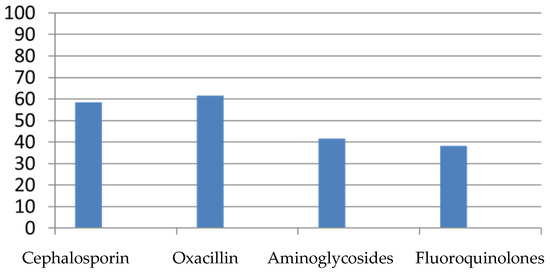
Figure 1
Open AccessArticle
Isolation and Characterisation of Human-Derived blaKPC-3-Producing Salmonella enterica Serovar Rissen in 2018
by
, , , , , , , , , , , and
Antibiotics 2023, 12(9), 1377; https://doi.org/10.3390/antibiotics12091377 - 28 Aug 2023
Abstract
In this study, we describe a Salmonella enterica serovar (S.) Rissen strain with a reduced susceptibility to meropenem, isolated from a urinary infection in an 89-year-old woman in 2018 during activity surveillance in Italy (Enter-Net Italia). The genomic characteristics, pathogenicity, and
[...] Read more.
In this study, we describe a Salmonella enterica serovar (S.) Rissen strain with a reduced susceptibility to meropenem, isolated from a urinary infection in an 89-year-old woman in 2018 during activity surveillance in Italy (Enter-Net Italia). The genomic characteristics, pathogenicity, and antimicrobial resistance mechanisms were investigated via a genomic approach. Antimicrobial susceptibility testing revealed a “susceptible, increased exposure” phenotype to meropenem in the S. Rissen strain (4_29_19). Whole-genome sequencing (WGS) was performed using both the NovaSeq 6000 S4 PE150 XP platform (Illumina, San Diego, CA, USA) and MinION (Oxford Nanopore). The S. Rissen 4_29_19 strain harboured two plasmids: a pKpQIL-like plasmid carrying the blaKPC-3 resistance gene in a Tn4401a transposon (pKPC_4_29_19), and a ColE-like plasmid (p4_4_29_19) without resistance genes, highly prevalent among Enterobacterales. Comparative analysis revealed that the pKPC_4_29_19 plasmid was highly related to the pKpQIL reference plasmid (GU595196), with 57% coverage and 99.96% identity, but lacking a region of about 30 kb, involving the FIIK2 replicon region and the entire transfer locus, causing the loss of its ability to conjugate. To our knowledge, this is the first time that a pKpQIL-like plasmid, carrying blaKPC-3, highly diffused in Klebsiella pneumoniae strains, has been identified in a Salmonella strain in our country. The acquisition of blaKPC genes by Salmonella spp. is extremely rare, and is reported only sporadically. In zoonotic bacteria isolated from humans, the presence of a carbapenem resistance gene carried by mobile genetic elements, usually described in healthcare-associated infection bacteria, represents an important concern for public health.
Full article
(This article belongs to the Section Mechanism and Evolution of Antibiotic Resistance)
►▼
Show Figures
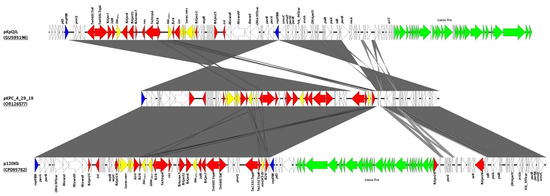
Figure 1

Journal Menu
► ▼ Journal Menu-
- Antibiotics Home
- Aims & Scope
- Editorial Board
- Reviewer Board
- Topical Advisory Panel
- Instructions for Authors
- Special Issues
- Topics
- Sections & Collections
- Article Processing Charge
- Indexing & Archiving
- Editor’s Choice Articles
- Most Cited & Viewed
- Journal Statistics
- Journal History
- Journal Awards
- Conferences
- Editorial Office
Journal Browser
► ▼ Journal BrowserHighly Accessed Articles
Latest Books
E-Mail Alert
News
Topics
Topic in
Antibiotics, Biomolecules, IJMS, Marine Drugs, Pharmaceuticals
Compounds with Medicinal Value (2nd Volume)
Topic Editor: Maria Stefania SinicropiDeadline: 30 September 2023
Topic in
Antibiotics, Biomedicines, Clinics and Practice, JCM, Reprod. Med.
New Strategies for Microbiological Control in Reproduction
Topic Editors: Ariadna Delgado, Jordi Ribas-Maynou, Carolina Maside, Lorena PadillaDeadline: 31 October 2023
Topic in
Antibiotics, IJMS, Magnetochemistry, Marine Drugs, Molecules
Emerging Aspects in Drug Discovery
Topic Editors: Morkos Henen, Quentin Vicens, Beat Rolf VögeliDeadline: 1 December 2023
Topic in
Antibiotics, Biomedicines, Microorganisms, Parasitologia, Pathogens, Vaccines
Advances in Vaccines and Antimicrobial Therapy
Topic Editors: Roberto Paganelli, Raffaele D’AmelioDeadline: 30 December 2023

Conferences
Special Issues
Special Issue in
Antibiotics
The Application of Antibiotic Therapy in Oral Surgery and Dental Implant Procedures
Guest Editors: Eugenio Velasco-Ortega, Angel-Orion Salgado-Peralvo, Juan Francisco Peña-CardellesDeadline: 1 September 2023
Special Issue in
Antibiotics
Clostridioides difficile Infection, 2nd Volume
Guest Editor: Guido GranataDeadline: 15 September 2023
Special Issue in
Antibiotics
Design Synthesis and Biological Implications of Antibacterial Substances
Guest Editor: Muhammad Jawad NasimDeadline: 30 September 2023
Special Issue in
Antibiotics
Antioxidant and Antibacterial Properties of Honey
Guest Editors: Malgorzata Dzugan, Miroslava KačániováDeadline: 15 October 2023
Topical Collections
Topical Collection in
Antibiotics
Antimicrobial Resistance and Anti-Biofilms
Collection Editors: Ding-Qiang Chen, Yulong Tan, Ren-You Gan, Guanggang Qu, Zhenbo Xu, Junyan Liu









.jpg)




